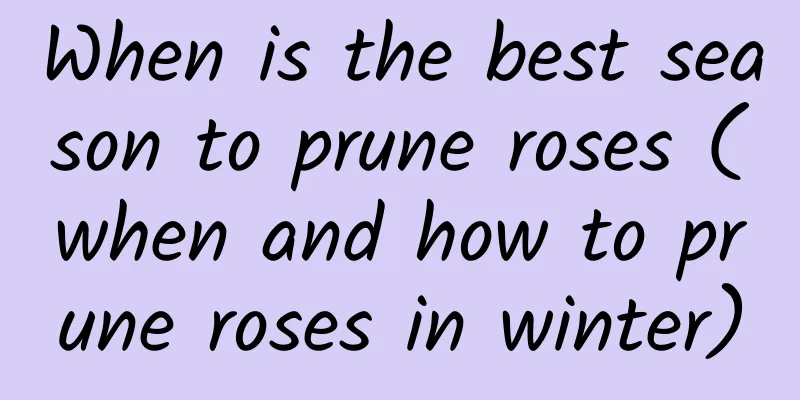How to grow wisteria

Likes moisture, water frequentlyThe taproot of Wisteria is deep, penetrates deep into the soil surface to absorb water, and has strong drought resistance. But wisteria likes moist soil. Try to keep the soil surface moist and don't water it too much, otherwise the roots will rot. Intolerant to fertility, apply less fertilizerWisteria is highly adaptable to the environment, and its taproot can absorb nutrients from the soil, so it does not require excessive fertilization. Basically, applying compound fertilizer 2 to 3 times a year can meet its growth needs. Before the plants sprout, you can apply a small amount of nitrogen fertilizer, superphosphate, etc. to promote the growth of branches and buds. Apply fertilizer 2 to 3 times during the growing season using well-rotted human or animal manure. The soil layer should be deepThe taproot of wisteria is relatively long, so you need to leave enough space for the roots to grow, and when planting, you should choose an area with deep soil. Wisteria has low soil requirements, but it will grow better if the soil is fertile. Likes sunshine, full sunWisteria is a large vine plant, most of which grow wild outdoors. No special sunlight is needed, normal sunlight is enough. It grows more vigorously in the summer when there is plenty of sunlight. Of course, it can enjoy the sunshine and withstand the cold winter. As long as you place the potted plants near the window, the room temperature is above zero degrees, and there is sunlight during the day, they can safely survive the winter. Too fast growth, timely pruningWisteria grows rapidly under suitable conditions, and even improved varieties grown in pots grow faster than other plants. In order to ensure the beautiful shape of the tree, in addition to reducing watering and fertilizing, you also need to know how to prune and pinch the top. Pruning is usually done during the dormant period each year to remove dense plants and leave thinner ones. Pinching is usually done when new branches grow out every year. When the branches grow to 15 cm, the tender buds at the front end of the branches are cut off. (For more wisteria flower tips, read the article Key Points for Wisteria Pruning) |
<<: What are the varieties of gardenia
Recommend
How to use the nutrient solution for lucky bamboo? The correct way to use the special nutrient solution
When summer turns to autumn, it is the period of ...
What to do if peony root rots
1. The soil is too wet In most cases, root rot is...
Can aspirin be used to grow flowers? You are not kidding me
Mulch The roots of newly transplanted, repotted, ...
Does Agave bloom?
When does agave bloom? Generally, you cannot expe...
Should I use a large or small pot for peony?
Should I use a large or small pot for celery peon...
How to make the Jade Butterfly wrap its leaves and how to raise it
1. Adequate sunlight It prefers sunlight and can ...
Planting methods and precautions for plantain
1. Maintenance methods 1. Substrate: For growing ...
What to do if the root of the problem is rotten
Two possibilities for root rot: Newly planted slo...
How to prune Blue Storm roses
When to prune Blue Storm roses Blue Storm Rose ca...
Are lotus and lotus the same? Pictures of lotus
1. Are they the same? Generally speaking, lotus a...
Are roses and Chinese roses the same?
1. Are they the same? Roses and roses are not the...
What fertilizer to apply after camellia blooms (how to fertilize camellia after flowering to make it bloom more)
Does camellia need to be fertilized after it bloo...
The difference between Qingli and Huangli
1. Difference of blades Qingli is a hybrid variet...
How to fertilize Dendrobium
1. Topdressing conditions First, make sure the te...
What fertilizer is suitable for peony flowers?
Peony flower fertilization time The best time to ...









